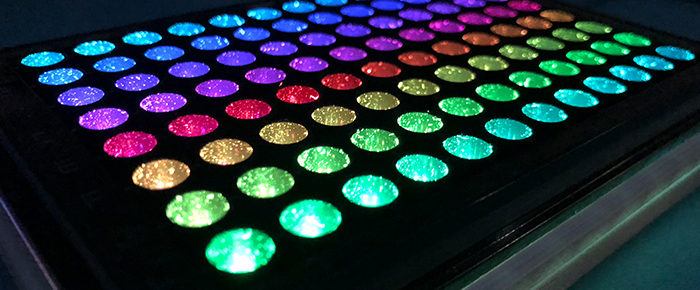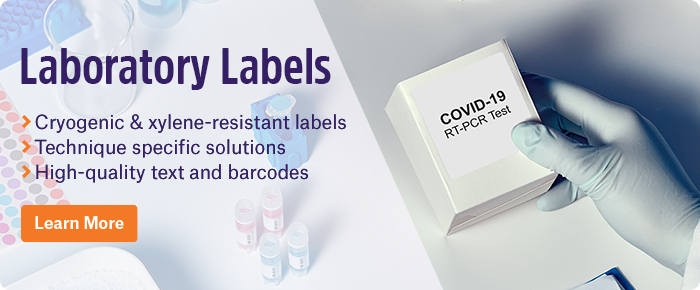 This week’s Research Spotlight focuses on Pierre Baillargeon, a senior robotics engineer in the Department of Molecular Medicine at the Scripps Research Institute. His work mostly centers around using 3D printers and automation to improve assay development, compound management, and ultra-high throughput screening for the Lead Identification group of the department.
This week’s Research Spotlight focuses on Pierre Baillargeon, a senior robotics engineer in the Department of Molecular Medicine at the Scripps Research Institute. His work mostly centers around using 3D printers and automation to improve assay development, compound management, and ultra-high throughput screening for the Lead Identification group of the department.
Strategies for automation, from the ground up
Mr. Baillargeon’s role in the department involves designing solutions that enhance the workflow and capabilities of those around him. To that end, he has developed lab automation platforms using novel software and hardware, and performs in-house engineering, particularly using 3D printing. He also works with a variety of cheminformatics, database administration, electronics, and electromechanical tools. As Mr. Baillargeon explained, the projects he works on are for a wide range of applications, not just one.
“Many of our in-house projects are specific to work in our lab, but some of the tools that we use for our in-house engineering efforts have indeed gained traction in other labs at Scripps. More specifically, a few years ago we set up a 3D printing workstation where users could get trained on the operation of our 3D printers and then bring CAD models to create whatever parts they needed. We have also published on one of our 3D printing efforts, where we created custom high throughput screening incubator shelving to support the screening of 3D spheroids.”
3D printers and automation
I recently met Mr. Baillargeon at the Society for Laboratory Automation and Screening (SLAS) Sample Management Symposium in Boston, MA, where he gave a presentation about how the technology he’s developing can be used for high throughput screening protocols and stressed the open-source nature of his work.
“We recently published on our custom 96- and 384- well RGB LED microplate compatible light panels in JoVE—our video is accessible without JoVE’s paywall and in SLAS Technology. A variety of applications for these light panels have been made, including manual cherry-picking, lab tours, and more recently, providing stroboscopic illumination for microsolenoid valve dispense QC. We also presented our open source orbital shakers at the SLAS Sample Management Symposium, which we have been utilizing in our lab. An assembly guide for these has recently been published to help other folks who may want to do the same.”
Mr. Baillargeon’s most recent project is an open-source microplate dispenser. “We developed a test platform for use with microsolenoid valves, which we then integrated into an open source pen plotter that is able to dispense into microplates. This project is still a work in progress, but we have a functional proof of concept that is working at this point. We recently presented this project at SLAS 2020 in San Diego a few months ago and is available to stream here under the title, ‘Leveraging Open source Electronics for Rapid Development of Custom Laboratory Devices’.”

The future of 3D printing in the lab and beyond
So, where does Mr. Baillargeon think this sort of open-source, DIY technology will lead in the future?
“I do think that these types of solutions will become more widespread because the software and hardware tools that are used to create them are becoming more affordable and more user-friendly, with a lower learning curve. The 3D printing space is a good example of this, but it also applies to electronics and many design (CAD for example) and software development tools that used to be inaccessible to non-expert users. I see many end users at Scripps who are empowered to create things for their own projects, which would have previously required outsourcing to engineering, design, and fabrication firms.”
While many labs are currently closed due to the COVID-19 pandemic, potentially resulting in a longer period of adoption for the solutions Mr. Baillargeon described, he mentioned that there is also room for 3D printing technologies to help combat the disease.
“I think 3D printing can help in some areas. A good example is the personal protective equipment shortages (PPE) that have been reported. Many 3D printing communities have been manufacturing face shields using open-source published designs, while supply chains are being re-established. There are some pretty interesting videos about these efforts here and here. I think this might help the economy rebound as well, as the availability of PPE is certainly one of the puzzle pieces that will be needed moving forward. The National Institutes of Health have also created a COVID-19 supply chain PPE webpage, where they are collecting 3D printable designs that have been reviewed for clinical use.”
“With COVID-19, the biggest challenge for me has been working remotely. I have not spent a lot of time thinking about these long-term concerns yet. I’m still just trying to adjust to working at home.”
LabTAG by GA International is a leading manufacturer of high-performance specialty labels and a supplier of identification solutions used in research and medical labs as well as healthcare institutions.





